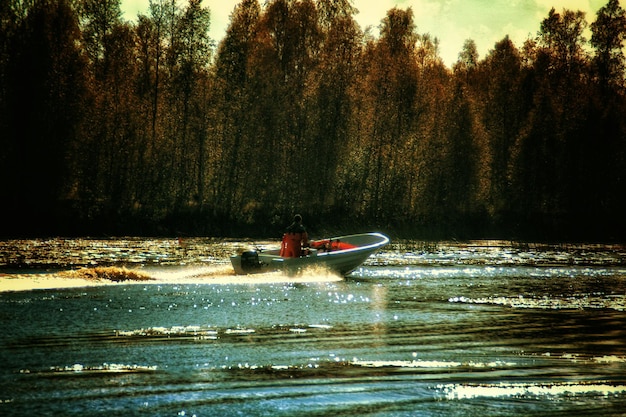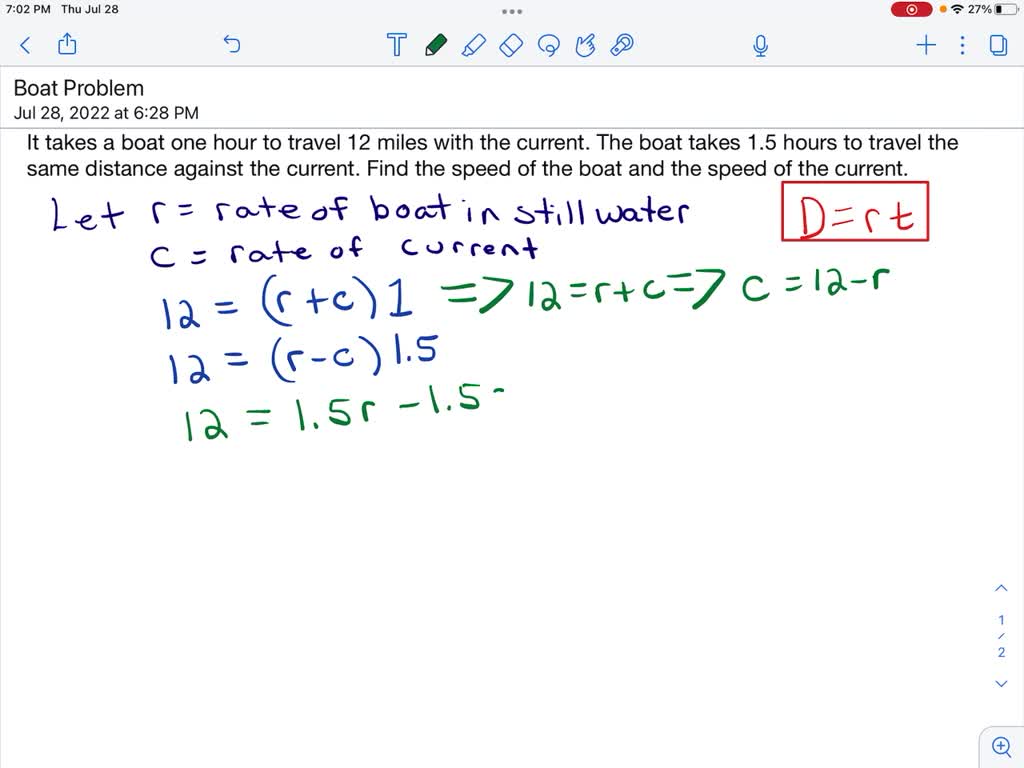Let's imagine Jack goes for a boat ride. He is on a river. This river flows. Jack is in a motorboat. He is heading upstream, against the current.
Understanding the Key Terms
First, we need to understand some key terms. These will help us analyze Jack's boat ride. Let's define them clearly.
Velocity
Velocity is the speed of something in a specific direction. It’s not just how fast something is moving. It also specifies where it's going. For example, a car moving at 60 km/h north has a velocity. A car moving at 60 km/h south has a different velocity, even though the speed is the same. Velocity is measured in meters per second (m/s) or kilometers per hour (km/h).
Current
The current is the flow of water in a river. It has a velocity. The current’s velocity is typically given in m/s. Imagine throwing a stick into the river. The stick will float along with the current. The current influences Jack's movement.
Relative Velocity
Relative velocity is the velocity of an object with respect to another object. It describes how fast an object is moving from the perspective of something else. For example, if you are on a train moving at 100 km/h. Someone walks towards the front of the train at 5 km/h. Their velocity relative to the train is 5 km/h. Their velocity relative to the ground is 105 km/h.
Jack's Boat Ride: Breaking It Down
Now, let's apply these concepts to Jack's boat ride. He is moving against the river current. We need to consider all the velocities.
The Boat's Velocity
The motorboat has its own velocity. This is how fast the boat would be moving in still water. Let's say the boat's velocity in still water is 10 m/s. This means the motor of the boat pushes it through the water at 10 m/s if there were no current.
The River's Velocity
The river has its own velocity as well. This is the speed of the current. Let’s assume the river's velocity is 2 m/s. This means the water is flowing downstream at 2 m/s.
Jack's Resultant Velocity
Jack's resultant velocity is the combination of the boat's velocity and the river's velocity. Because Jack is going against the current, the river's velocity will reduce his effective speed. To find the resultant velocity, we subtract the river's velocity from the boat's velocity. In this case, it would be 10 m/s - 2 m/s = 8 m/s. This means that Jack is only moving upstream at 8 m/s relative to the riverbank. This is because the river is slowing him down.
A Visual Example
Imagine a treadmill. You start walking forward on the treadmill at 5 km/h. The treadmill is moving backward at 3 km/h. Your speed relative to the room is only 2 km/h. This is because the treadmill is working against you. Jack's situation is similar to this.
Different Scenarios
Let's look at a few different scenarios to further illustrate the concept.
Scenario 1: Jack is Stationary
What if Jack only set the boat’s engine at 2 m/s? His boat's velocity is 2 m/s. The river's velocity is still 2 m/s. Jack's resultant velocity would be 2 m/s - 2 m/s = 0 m/s. Jack would appear to be stationary to someone standing on the riverbank. His boat's engine power is just enough to counter the current. He stays in the same spot.
Scenario 2: Jack is Moving Downstream
What if Jack turns off the engine completely? His boat's velocity is now 0 m/s. The river's velocity is 2 m/s. His resultant velocity is 0 m/s + 2 m/s = 2 m/s (downstream). Jack would be floating downstream at the same speed as the river current.
Scenario 3: Jack Increases Speed
Let’s say Jack increases his speed. The boat's velocity is now 15 m/s. The river's velocity is 2 m/s. His resultant velocity is 15 m/s - 2 m/s = 13 m/s. Jack moves upstream at a faster rate.
Real-World Applications
These concepts apply to more than just boats. They can be seen in other situations. Airplanes flying in windy conditions are a good example. The wind acts like the river current. The airplane's velocity relative to the air is different from its velocity relative to the ground. Swimmers in a river face similar challenges as Jack. Understanding relative velocity is important for navigation and problem-solving in various real-world scenarios.
Putting It All Together
In summary, when Jack rides in a motorboat against a river current, his resultant velocity is the difference between his boat's velocity in still water and the river's velocity. If the boat's velocity is greater than the river's velocity, Jack moves upstream. If they are equal, Jack remains stationary. If the river's velocity is greater, Jack moves downstream.
This understanding of relative velocity can be applied to different situations. Whether you are planning a boat trip or analyzing airplane flight paths. Understanding how different velocities interact is essential.


